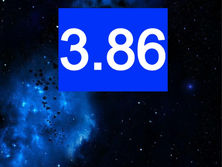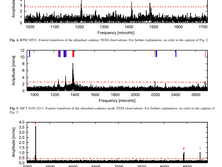[1] D. V. Averin and K. K. Likharev, J. Low Temp. Phys. 62, 345 (1986); T. A. Fulton and G. J. Dolan, Phys. Rev. Lett. 59, 109 (1987). [2] R. J. Schoelkopf, P. Wahlgren, A. A. Kozhevnikov, P. Delsing, and D. E. Prober, Science 280, 1238 (1998); M. A. Sillanp¨a¨ , L. Roschier, and P. J. Hakonen, Phys. Rev. Lett. 93, 066805 (2004). [3] M. H. Devoret, R. J. Schoelkopf, Nature 406, 1039 (2000). [4] Y. Nakamura, Y. A. Pashkin, and J. S. Tsai, Nature, 398, 786 (1999); Yu. Makhlin, G. Sch¨on, and A. Shnirman, Rev. Mod. Phys. 73, 357 (2001); D. Vion et. al., Science 296, 886 (2002); Y. Nakamura, Yu. A. Paskin, T. Yamamoto, and J. S. Tsai, Phys. Rev. Lett. 88, 047901 (2002); Yu. A. Paskin et. al., Nature 421, 823 (2003); T. Yamamoto et. al., Nature 425, 941 (2003); T. Duty, D. Gunnarsson, K. Bladh, and P. Delsing, Phys. Rev. B 69 132504 (2004); J.Q. You and F. Nori, Physics Today 58, 42 (2005); G. S. Paraoanu, Phys. Rev. B 74, 140504(R) (2006). G. S. Paraoanu, Phys. Rev. Lett. 97, 180406 (2006); J. Li, K. Chalapat, and G. S. Paraoanu, Phys. Rev. B 78, 064503 (2008); J. Li and G.S. Paraoanu, New J. Phys. 11, 113020 (2009). [5] G. S. Paraoanu and A. M. Halvari, Appl. Phys. Lett. 86, 093101 (2005); T. F. Li et. al., Appl. Phys. Lett. 91, 033107 (2007). [6] J. P. Pekola, K. P. Hirvi, J. P. Kauppinen, and M. A. Paalanen, Phys. Rev. Lett. 73, 2903 (1994); K. P. Hirvi, J. P. Kauppinen, A. N. Korotkov, M. A. Paalanen, and J. P. Pekola, Appl. Phys. Lett. 67, 2096 (1995); J. P. Kauppinen and J. P. Pekola, Phys. Rev. Lett. 77, 3889 (1996); Sh. Farhangfar, K. P. Hirvi, J.P. Kauppinen, J. P. Pekola, J. J. Toppari, D. V. Averin, and A. N. Korotkov, J. Low Temp. Phys. 108, 191 (1997); J. P. Pekola, J. J. Toppari, J. P. Kauppinen, K. M. Kinnunen, A. J. Manninen, and A. G. M. Jansen, J. Appl. Phys. 83, 5582 (1998); J. P. Kauppinen, K. T. Loberg, A. J. Manninen, J. P. Pekola, and R. V. Voutilainen, Rev. Sci. Instrum. 69, 4166 (1998). [7] M. M. Leivo, J. P. Pekola, and D. V. Averin, Appl. Phys. Lett. 68, 1996 (1996); J. P. Pekola, F. Giazotto, and O.-P. Saira, Phys. Rev. Lett. 98, 037201 (2007); O.-P. Saira, M. Meschke, F. Giazotto, A. M. Savin, M. Mottonen, J. P. Pekola, Phys. Rev. Lett. 99, 027203 (2007). [8] A. B. Zorin, S. V. Lotkhov, H. Zangerle, and J. Niemeyer, J. Appl. Phys. 88, 2665 (2000); R. Dolata, H. Sch


































